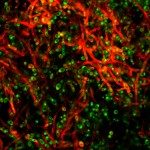Link to Pubmed [PMID] – 23594150
Clin. Microbiol. Infect. 2014 Feb;20(2):153-8
Candida spp. are responsible for severe infections in immunocompromised patients and those undergoing invasive procedures. The accurate identification of Candida species is important because emerging species can be associated with various antifungal susceptibility spectra. Conventional methods have been developed to identify the most common pathogens, but have often failed to identify uncommon species. Several studies have reported the efficiency of matrix-assisted laser desorption ionization-time of flight mass spectrometry (MALDI-TOF MS) for the identification of clinically relevant Candida species. In this study, we evaluated two commercially available MALDI-TOF systems, Andromas™ and Bruker Biotyper™, for Candida identification in routine diagnosis. For this purpose, we investigated 1383 Candida isolates prospectively collected in eight hospital laboratories during routine practice. MALDI-TOF MS results were compared with those obtained using conventional phenotypic methods. Analysis of rDNA gene sequences with internal transcribed regions or D1-D2 regions is considered the reference standard for identification. Both MALDI-TOF MS systems could accurately identify 98.3% of the isolates at the species level (1359/1383 for Andromas™; 1360/1383 for Bruker Biotyper™) vs. 96.5% for conventional techniques. Furthermore, whereas conventional methods failed to identify rare or emerging species, these were correctly identified by MALDI-TOF MS. Both MALDI-TOF MS systems are accurate and cost-effective alternatives to conventional methods for mycological identification of clinically relevant Candida species and should improve the diagnosis of fungal infections as well as patient management.

